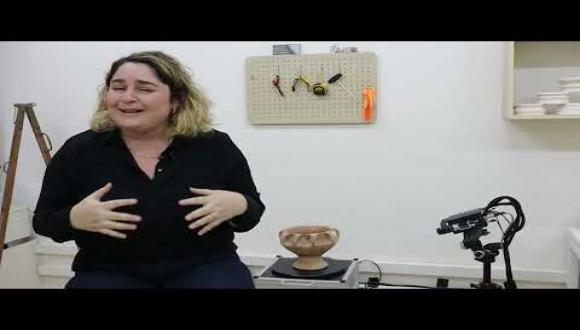The Computational Archaeology Laboratory (CompArchTAU)
Archaeology is by its nature a highly interdisciplinary field of research, especially in its application of the methods of the exact sciences. During the past decade, in light of new developments in digital technology, there has been a continuous trend toward the integration of computational methods into archaeological research. These methods for collecting, processing, and analyzing computational data allow archaeologists to engage in innovative research and examine past cultures from new perspectives.
This October, a new computational archaeology laboratory (CompArchTAU) was opened in the Sonia & Nadler Institute of Archaeology at Tel Aviv University. Top of FormThe lab, headed by Ortal Harush, was established in order to develop computational research projects using 3-D scans of archaeological finds. The lab is equipped with an optical 3-D scanner (Polymetric – PT-M) capable of producing high-resolution 3-D models of a wide variety of objects: from small seeds to ceramic sherds, stone artifacts, architectural elements, and even elephant tusks.
The 3-D models produced in the lab can be used for several purposes. The models themselves can be used for the presentation of finds in the classroom, at academic conferences, and in museums. They can likewise be utilized to produce drawings for scientific publications. Since these digital drawings are automatically generated from scans of the artifacts, they are faster to produce, more accurate, and more objective than traditional hand drawings. However, the primary use of archaeological 3-D models is in computational research.
The processing of 3-D models for documentation and research purposes is achieved via programs that were developed specifically for archaeologists by the computational archaeology lab headed by Prof. Leore Grosman at the Hebrew University in Jerusalem. These programs enable the user to position the scanned models in a consistent manner, to accurately and easily measure artifacts, and to compare them statistically in order to address a wide range of archaeological research questions. For example, computational methods can be implemented in order to study production technologies, to quantify the shapes of finds, and to identify the differences and similarities between groups of objects. When cross-analyzed against multiple streams of data provided by interdisciplinary collaboration, these methodologies have great potential to provide new insights across all archeological periods.
In addition to research, the Computational Archaeology Laboratory will facilitate the introduction of computational methods into the work of students and researchers at the institute. This year, the Department will offer a course titled “Computational Archaeology in 3-D” for undergraduate and graduate students. The students in the course will be presented with recent developments in computational archaeology and will carry out a personal research project using the tools offered by the lab. The objective of this course is to promote the implementation of innovative methods among the next generation of archaeologists.
/ON9A6335.jpg) |
/ON9A6320.jpg) |



